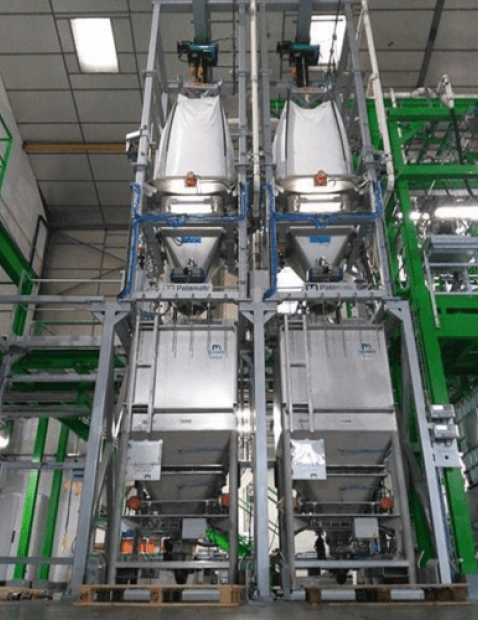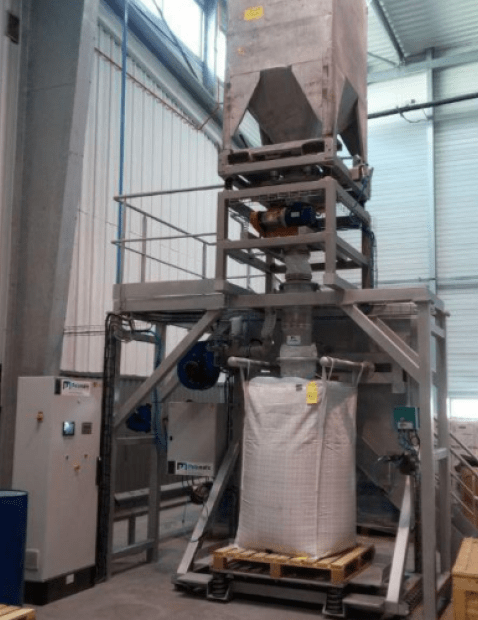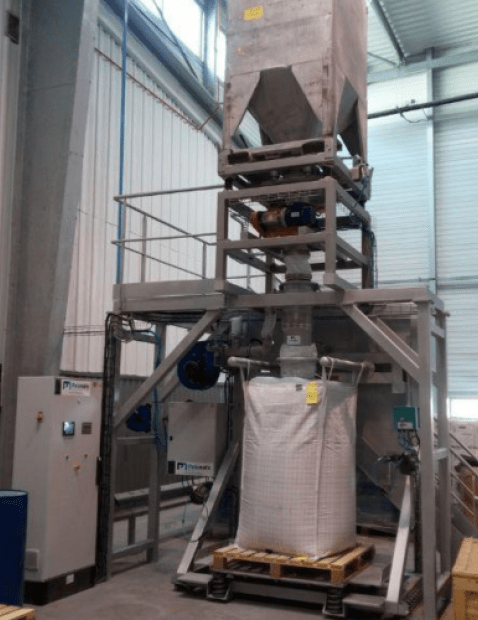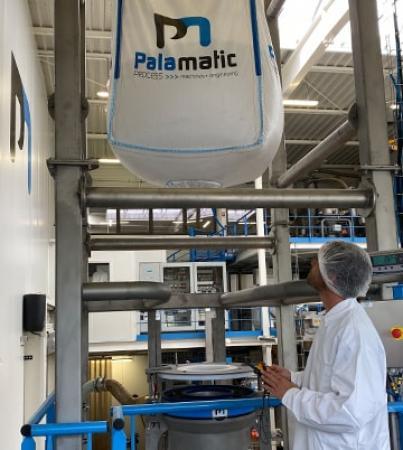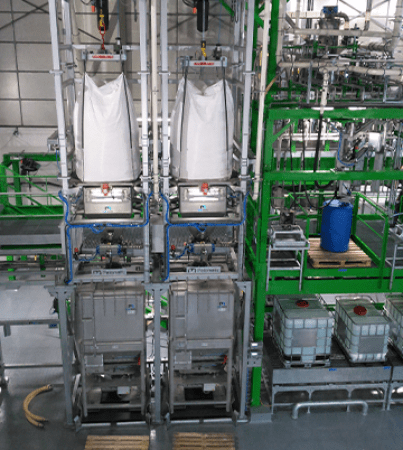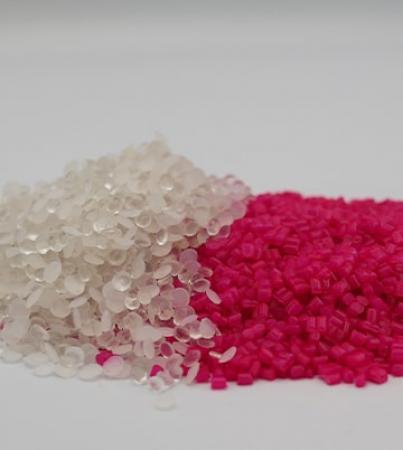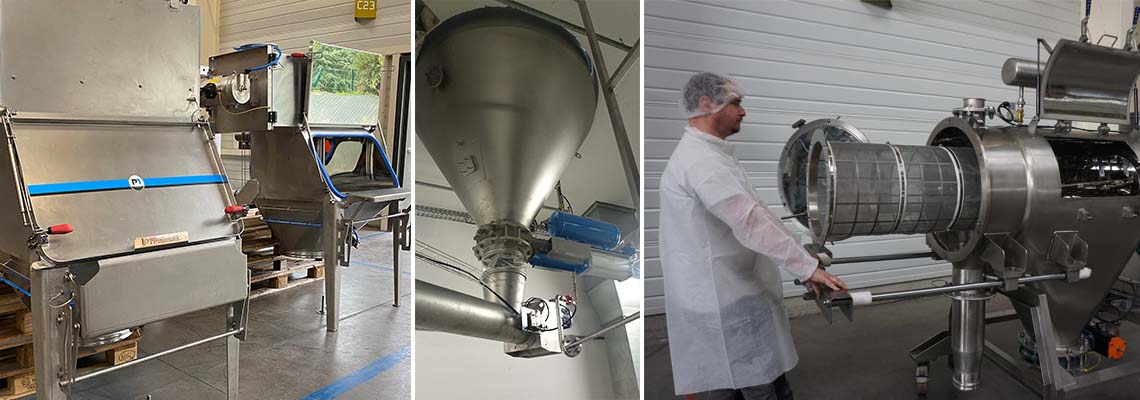
- 1. What is stainless steel made of? What is the difference between 304 stainless steel and 316 stainless steel?
- 2. What are the advantages of stainless steel?
- 3. What type of stainless steel for the food, chemical and pharmaceutical sectors?
- 4. How to maintain and clean stainless steel equipment?
- 5. Palamatic stainless steel equipment
Stainless steel is present in our daily lives (kitchen, household appliances, transport, medicine, architecture, etc.) as well as in many industries (food, chemicals, cosmetics, pharmaceuticals, aeronautics, automobiles, etc.).
But what is stainless steel? What are the main characteristics of stainless steel? What are the benefits of stainless steel? Why use stainless steel materials in the food or pharmaceutical industry? We will try to answer these different questions in this article.
1. What is stainless steel made of? What is the difference between 304 stainless steel and 316 stainless steel?
Stainless steel is a metal made of different alloy elements. To put it simply, stainless steel is composed of a certain proportion of chromium, which allows it to be extremely resistant to corrosion. The formation of a protective layer of chromium oxide prevents it from forming rust on contact with oxygen in the air (stainless steel passivation phenomenon).
There are two types of stainless steel:
- 304 stainless steel is mainly used for indoor, dry environments and should not be exposed to polluting elements such as: chemical substances, industrial areas, ports, swimming pools, etc.
- 316 stainless steel is suitable for outdoor installations located in aggressive, polluted environments or exposure to constant humidity.
These two stainless steel variants are composed of iron (50%), carbon (1.2%), chromium (greater than 10.5%) and nickel, which provides stability and solidity to the material.
The presence of Molybdenum (between 2 and 3%) in 316 stainless steel, differentiates it from 304 stainless steel, giving it additional resistance to rust.
Stainless steels can also be classified into 4 categories according to their grades: martensitic-ferritic, austenitic and austenitic-ferritic (or duplex).
2. What are the advantages of stainless steel?
Stainless steel has several advantages that make it a widely used material:
- It is anti-corrosive.
- Stainless steel is resistant to temperature variations and heat. It can withstand temperatures up to 300°C, as well as high humidity.
- Stainless steel is a durable, infinitely recyclable and does not lose its quality over time.
- Stainless steel has a good transformation capacity (easy to weld, bend and cut).
- Stainless steel has an inert surface that prevents any contamination of the final product and thus protects your process from any form of contamination.
- Stainless steel is hygienic and easy to clean.
- It does not require much maintenance.
- Stainless steel is aesthetic and available in several finishes.

Are you looking for stainless steel equipment?
I can advise you on your project.
Tarik, powder expert
3. What type of stainless steel for the food, chemical and pharmaceutical sectors?
Stainless steel is found in many industries for storage and transport operations, but also for production equipment. Stainless steel particularly meets the strict requirements of the food, pharmaceutical and cosmetics industries in terms of safety and hygiene.
It offers resistance, durability, ease of cleaning and total respect for the products handled. In addition, it helps to fight against the proliferation of micro-organisms (bacteria, molds).
304 stainless steel, also called food grade stainless steel, is suitable for standard indoor and outdoor environments and chemically unpolluted. It is widely used in food industries such as dairy, animal nutrition, etc.
316 stainless steel, or "indestructible stainless steel", should be preferred for all outdoor industrial applications exposed to humidity or dealing with chemicals, salt, frost, chlorine, etc. It can be used in water treatment systems, waste, nuclear, chemical, etc.
4. How to maintain and clean stainless steel equipment?
Despite its resistance to corrosion, stainless steel can suffer from multiple corrosions if it is not sufficiently maintained: intracrystalline corrosion, pitting corrosion, galvanic corrosion, crevice corrosion, etc.
Maintenance of your stainless steel industrial equipment is therefore essential to preserve their properties and prevent rust. Gentle cleanses can be applied on a regular basis with:
- lukewarm water and/or pressurized steam
- soap or a naturally degreasing dishwashing liquid to remove stains
- ammonia or alkaline detergents
- organic solvents (for grease and oil residues)
- nitric acid solutions or gels (for passivation)
When cleaning stainless steel, substances containing aggressive chlorides or abrasive objects that can scratch the material should not be used. Mixing several cleaning products is also to be avoided in order to avoid any chemical reaction that could alter your machine.
5. Palamatic stainless steel equipment
Most Palamatic Process equipment is available in a 304 or 316 stainless steel versions for handling your bulk products: containers, big bag unloading stations, big bag fillers, bagging machines, industrial mixers, drum tippers, industrial screw feeders, transfer screws, pneumatic transport system, vibrating sieves and centrifugal screens, dust collectors, etc.
The choice of stainless-steel grade will be decisive for its durability. Contact our experts to discuss the solution best suited to your process constraints.














